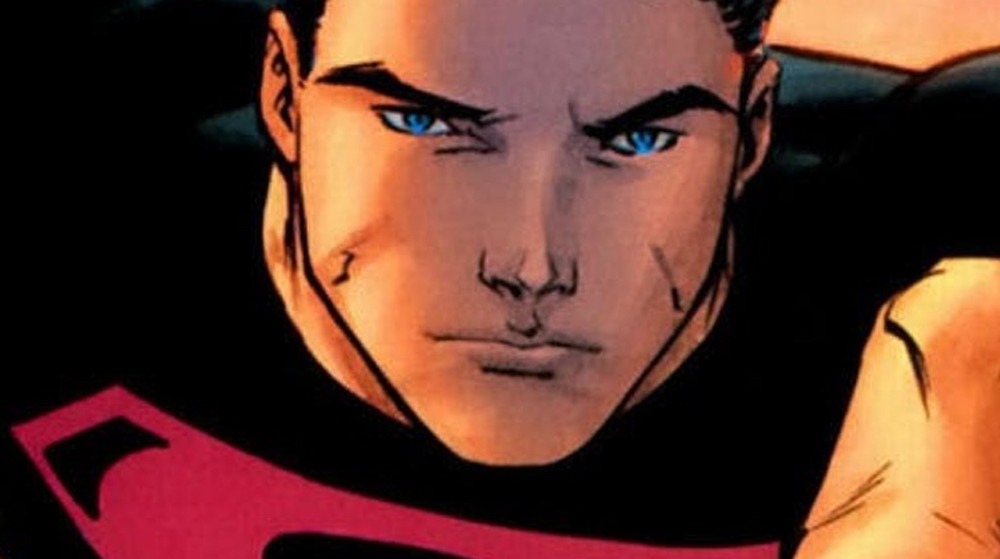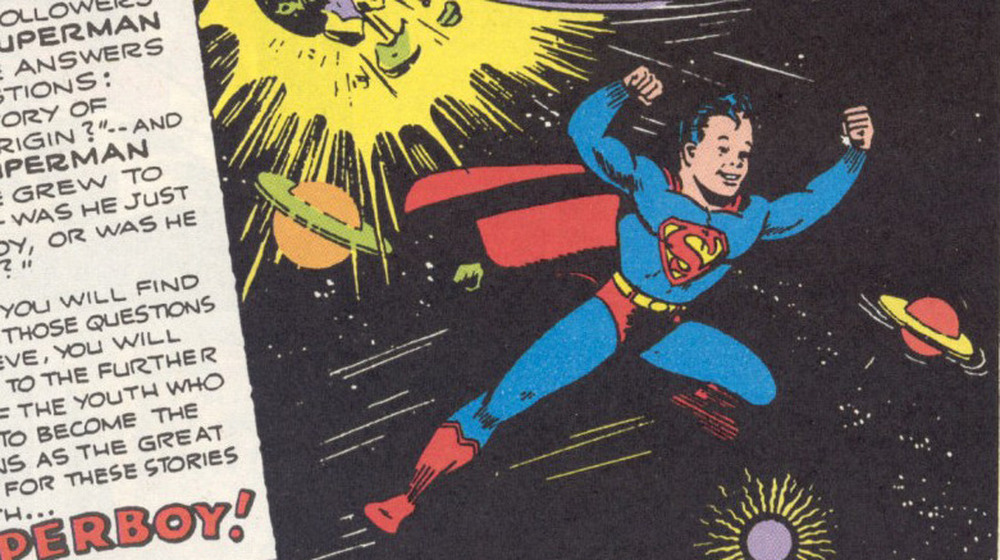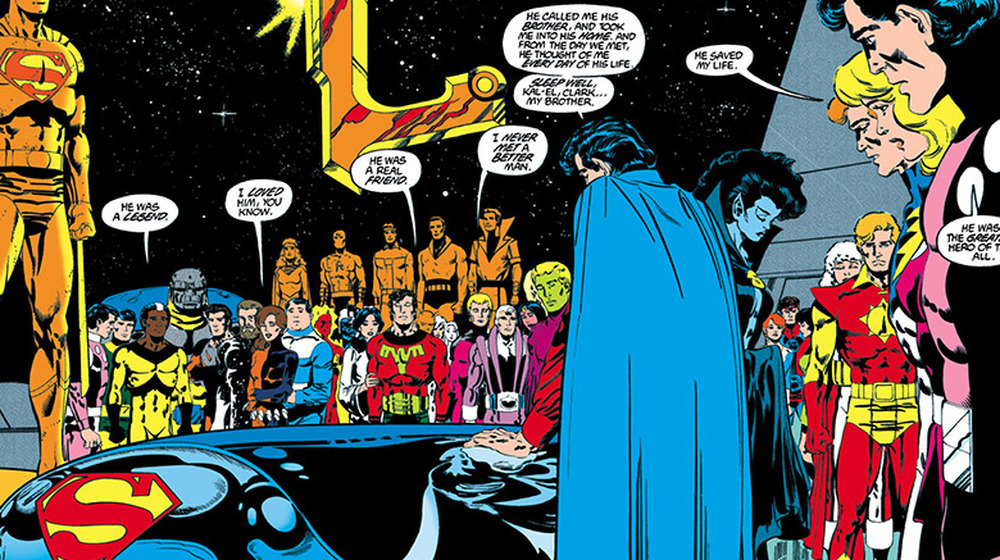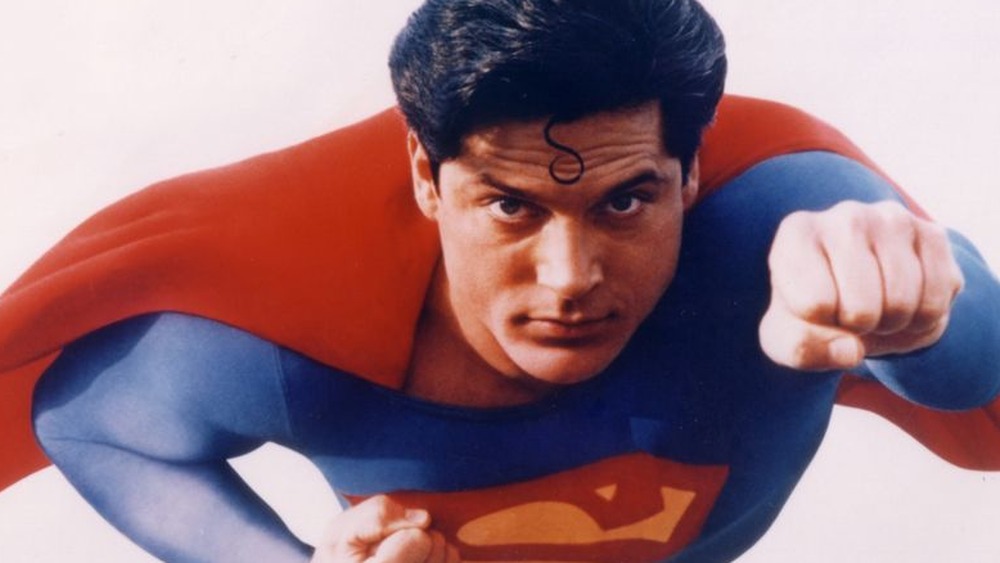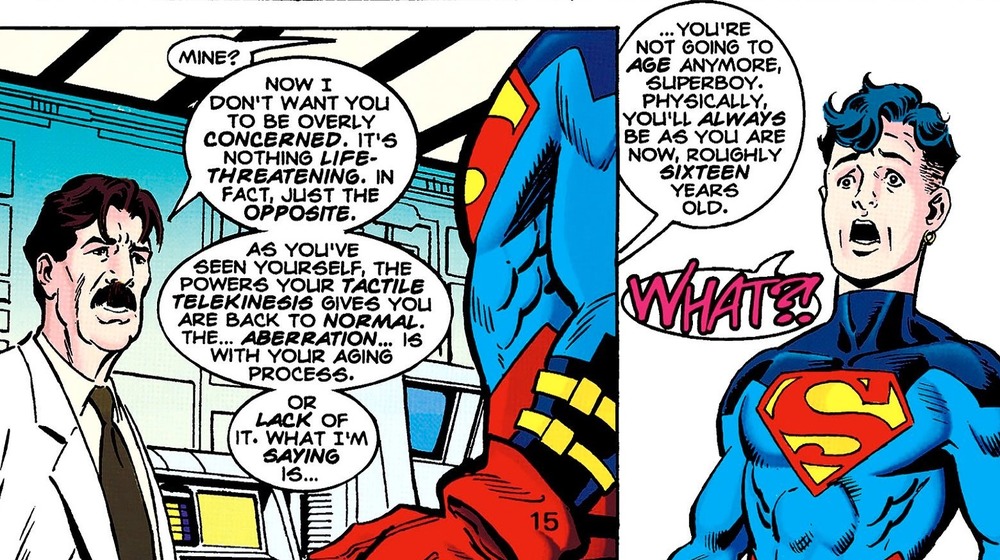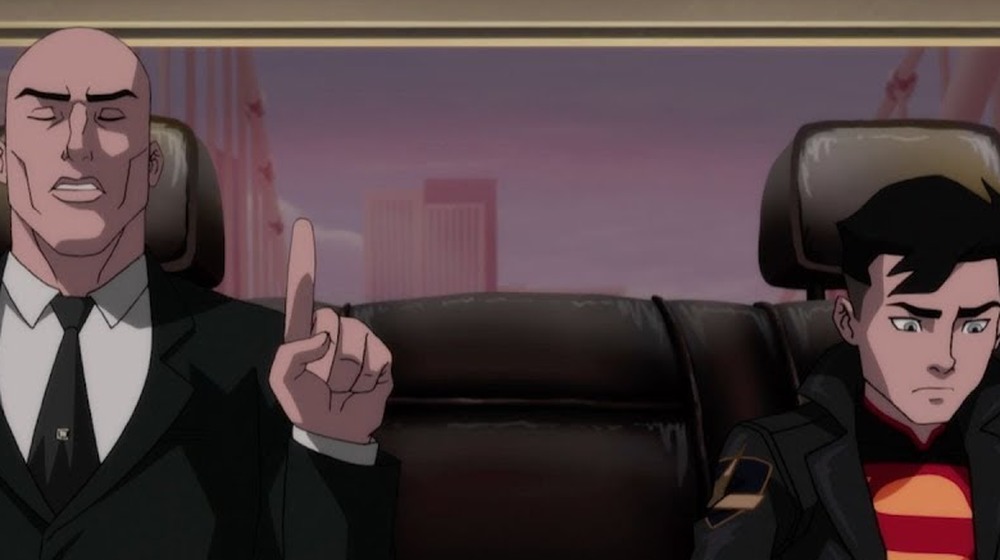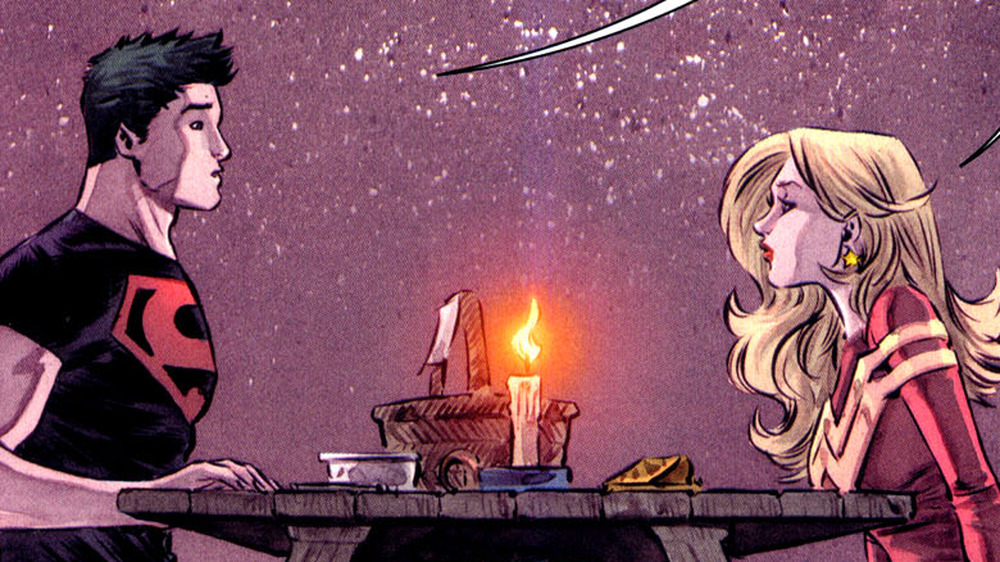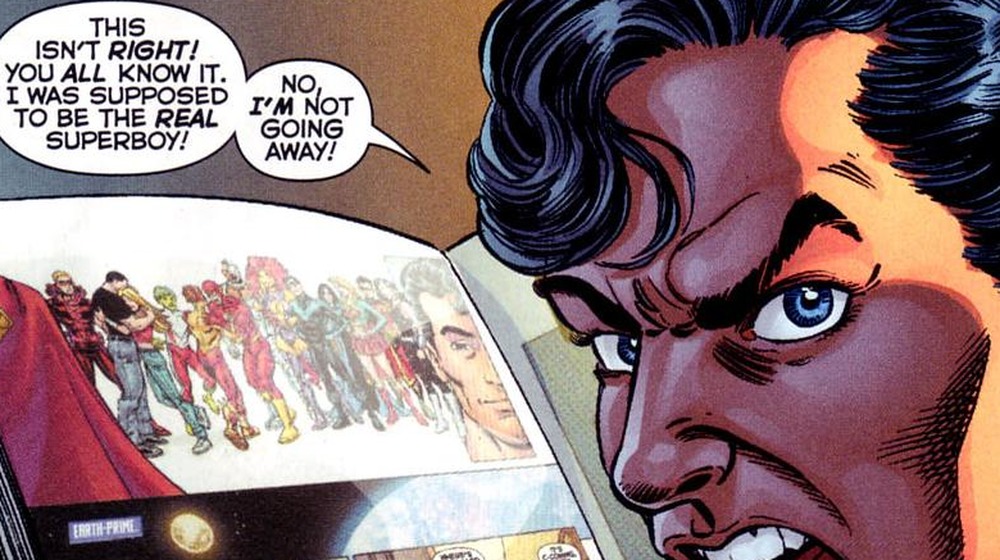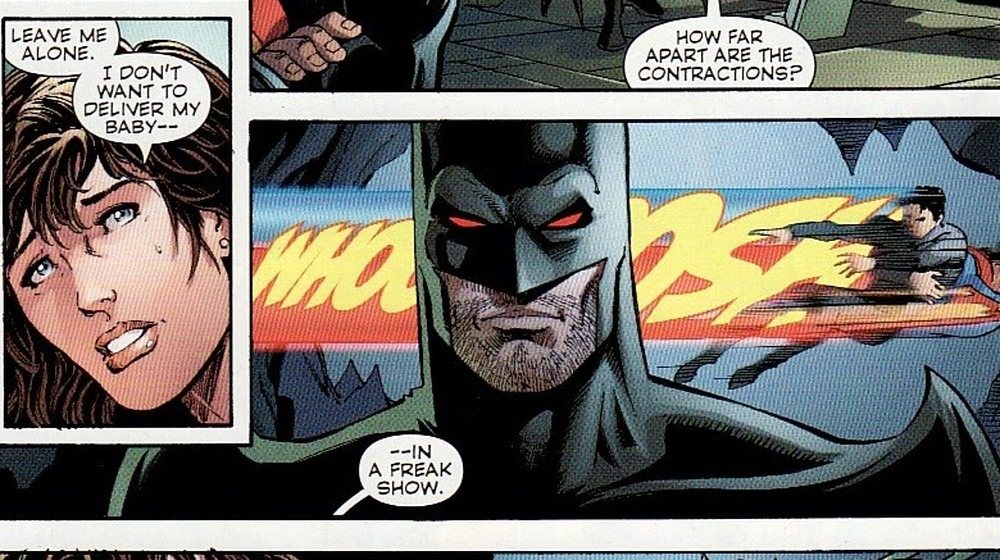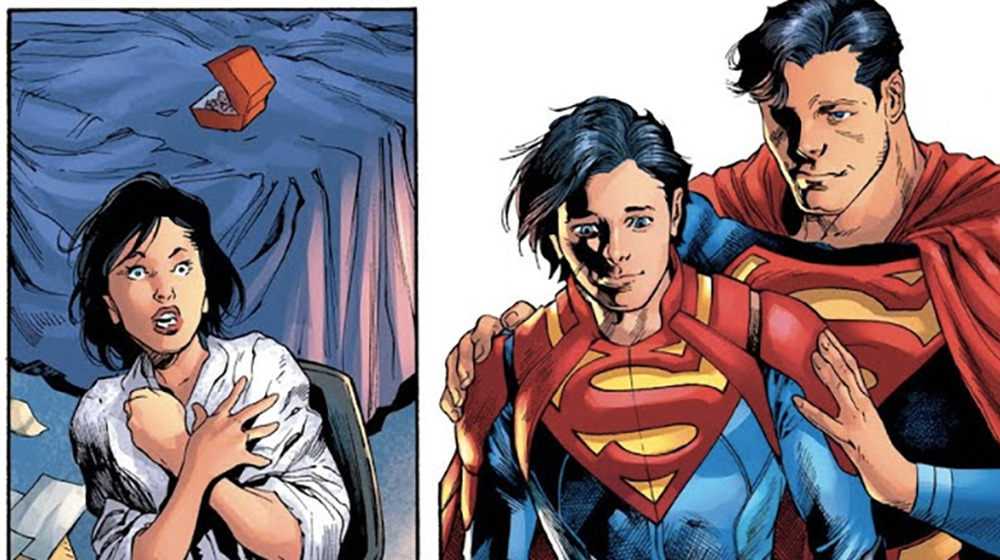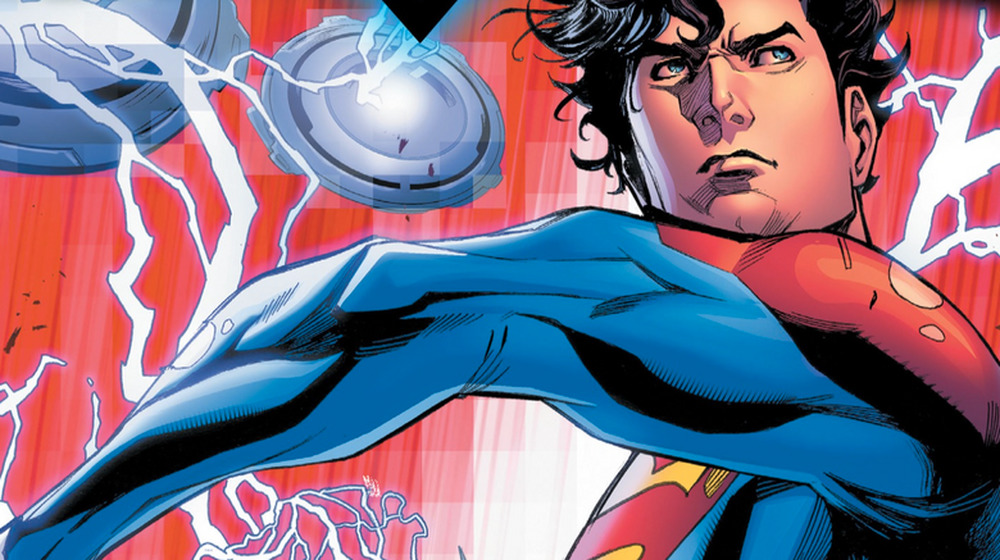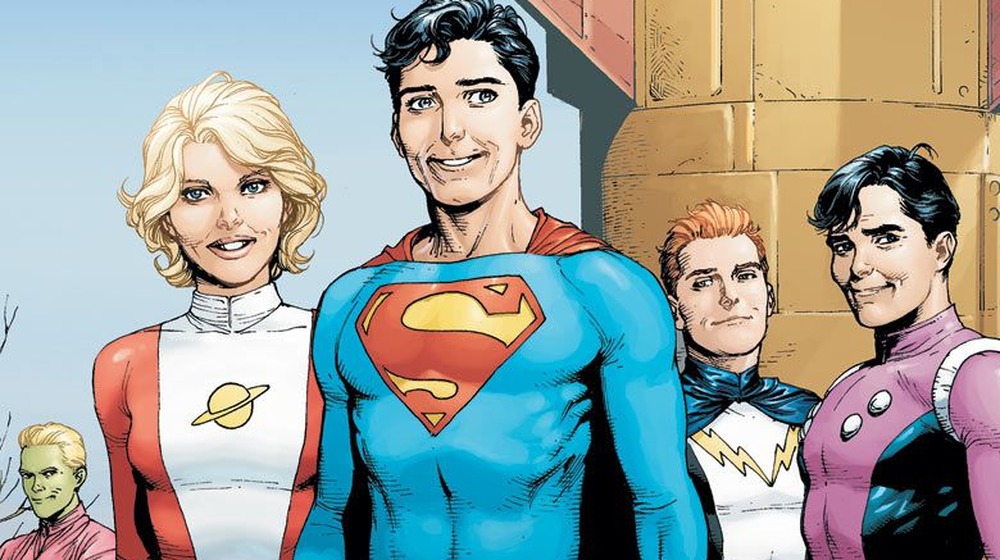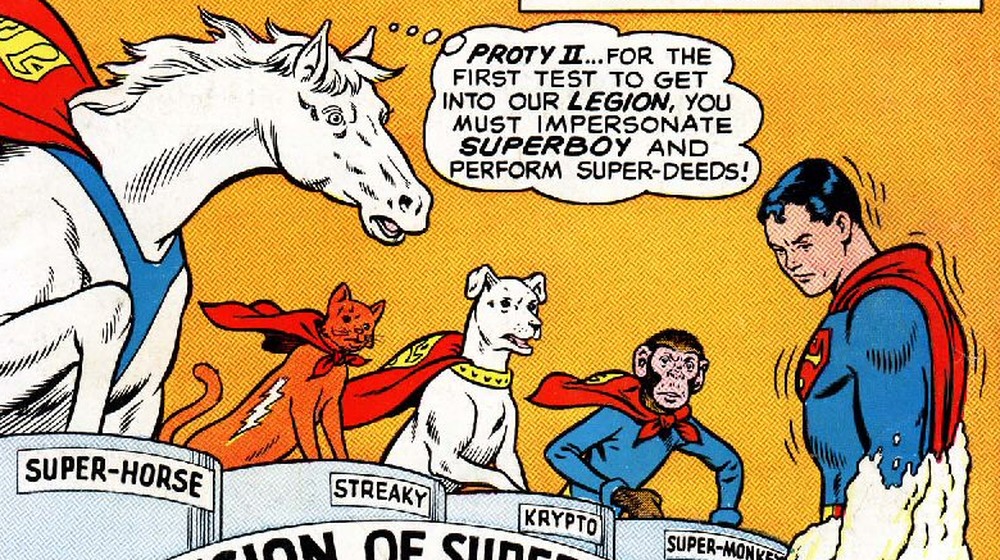The Untold Truth Of DC's Superboy
"It's a bird, it's a plane, it's... Superboy?"
For many DC Comics fans, Superboy is almost as well-known as his adult counterpart, Superman. The Boy of Steel has been appearing in the DC Universe since 1944. He's been the star of multiple comic books, live-action TV shows, and animated series. And with the debut of Superman & Lois, Superboy may once again be soaring into the spotlight.
Superboy gets a little tricky to explain, however, when fans discover that he isn't just one person. Although many people believe Superboy is simply a younger version of Clark Kent, the truth is that many different characters have taken on the name of Superboy over the years — and not all of them are Kryptonian... or heroic. With that in mind, let's take a close look at some fascinating moments in Superboy history and learn the truth behind the Boys of Steel.
He was originally rejected by DC Comics
Most fans know that Jerry Siegel and Joe Shuster created Superman, but did you know that Siegel also created the first pitch for Superboy — only for his idea to be rejected? On November 30, 1938, five months after Superman made his debut in Action Comics #1, Siegel wrote a proposal to tell stories of a young Superman. In his pitch, Siegel writes his "Superboy" would probably appear as a newspaper comic strip and feature a cast of mainly 12-year-old children. However, Detective Comics rejected the idea.
Siegel approached Detective Comics again in December 1940, this time with a detailed script and outlines of his Superboy story. Once again, Detective Comics declined his pitch. By 1944, however, kid sidekicks like Batman's Robin were popular, and Detective Comics published the first Superboy comic story in More Fun Comics #101, featuring artwork by Joe Shuster. Superboy became popular and went on to appear in Adventure Comics and his own book, Superboy.
This created friction with Siegel, who received no compensation for DC's use of Superboy. In 1947, both Siegel and Shuster brought an action against National Periodical Publications (the comic book company that would become DC Comics) claiming they had no right to publish Superboy since he was based on Siegel's rejected concept and story. A special referee declared Superboy was an independent creation from Superman, but a later consent decree established that Superboy belonged to National.
He dies in the 30th century
Superboy, as a young Clark Kent, would go on to have many adventures in the comics and become a popular fixture in DC Comics. However, after the "Crisis on Infinite Earths" comic book event during the 1980s, DC rewrote its entire comic book history and retconned Superboy out of existence. In this new post-Crisis universe, Clark Kent didn't become a costumed hero until adulthood, meaning he never had his Superboy adventures.
However, this wasn't the end for Superboy. In Superman Vol. 2 #8, fans learn that a villain known as the Time Trapper created a pocket dimension virtually identical to the world of the pre-Crisis Superboy's, including its own version of Superboy. This Superboy goes on to battle the Time Trapper but ultimately sacrifices himself to save his pocket dimension from collapsing in Legion of Superheroes Vol. 3 #38. As a final act, he takes his friends, the Legion of Superheroes, back to the 30th century, but he dies in the process and is later buried in the future.
He started the modern live action DC superhero TV series
Today, shows like Smallville, The Flash, Arrow, and Supergirl have made superhero dramas a staple in TV entertainment. But back in the 1980s, serious superhero television series were still an anomaly. While live-action superhero TV shows did exist as far back as George Reeves' Adventures of Superman show from the 1950s and Adam West's 1960s Batman series, they tended to be campy productions.
In 1988, however, Alexander and Ilya Salkind, the producers behind the 1978 Superman movie, produced a live-action Superboy television series (later renamed The Adventures of Superboy) which ran for four seasons. The show starred John Haymes Newton as a young Clark Kent/Superboy until he was recast in season 2 by Gerard Christopher, who played the character until the end of the series. Many comic book and animation writers, including Denny O'Neil, Stan Berkowitz, and J.M. DeMatteis, wrote the episodes, making the plots very similar to the comics.
While season 1 of Superboy focuses primarily on street crime, later seasons introduce popular supervillains like Bizarro and Metallo. The stories also became darker, like the two-part season 2 storyline "Roads Not Taken," in which Superboy travels to parallel worlds where he became a dictator or a murderer. Although largely forgotten today, The Adventures of Superboy laid much of the groundwork for modern superhero dramas.
He couldn't age past 16 years
Most comic book characters remain eternally young, but Superboy once took this to a disturbing extreme. After DC's "Death of Superman" storyline, four new Supermen emerged to take over the Man of Steel's role, including a teenage clone of Superman. Later named "Conner Kent" and "Kon-El," this new Superboy went on to star in his own Superboy comic book.
However, in Superboy #41, Superboy's body begins falling apart due to cellular degeneration. Scientists decide to rebuild him using donor DNA from his teenage friend Roxy and manage to save him. In the aftermath, however, Superboy discovers the procedure stopped his aging process, making him a permanent 16-year-old. Later plotlines altered Superboy's biology allowing him to age again, but for a while this Boy of Steel was basically DC's answer to Peter Pan.
Of course, comics being what they are, Superboy has continued to appear as a teenager in most of his appearances even decades after he was introduced. He may have dreams of one day being Superman, but most comic book creators choose to keep him a boy.
He's the child of Superman... and Lex Luthor
Once DC began experimenting with Superboy characters that weren't all young versions of Clark Kent, they chose to give them very unique origins. Sadly, many of these origins have proven very traumatic for Conner Kent/Kon-El. Originally, this Superboy believes he's a clone of Superman. In Adventures of Superman #506, however, he learns the lab that created him couldn't clone Kryptonian DNA and chose to make a human clone with superpowers. At one point, Superboy believes his human donor is Paul Westfield, the unscrupulous executive director of the lab that built him.
However, this origin is retconned once again into a more disturbing version when Superboy learns he is cloned from Superman's DNA — but also has the DNA of Lex Luthor. This inspires multiple plotlines where Superboy wonders if his genetic makeup predisposes him to be a hero or a villain (or to go bald). Certain alternate futures do show Superboy growing up to be a superhuman overlord, but ultimately his fate is left up to him to decide.
He hooked up with Wonder Girl
Comic book creators have been trying to pair up Superman and Wonder Woman for years. On the surface, they look like a good match. They're both godlike beings, powerful symbols, and work well together in the Justice League. However, Superman's personality remains most compatible with human characters like Lois Lane, so even when writers try to shoehorn him into a relationship with the Amazon princess, he inevitably goes back to the status quo.
But the same can't be said about the Conner Kent version of Superboy. As an independent character, Superboy follows his own path — and his adventures allow him to meet one of Wonder Woman's protégés, a teenager named Cassie Sandsmark (a.k.a. Wonder Girl). Gifted with the powers of the Greek Gods, Cassie is Conner's equal at superheroics. More importantly, the two develop a close friendship in the comic books Young Justice and Teen Titans, which eventually evolves into love.
Conner and Cassie consummate their relationship in Teen Titans Annual #1, but unfortunately Superboy sacrifices himself to stop the evil Superboy-Prime the very next day. Conner is later resurrected and manages to reconnect with Cassie, but shortly after that, the DC Universe was rebooted, erasing their relationship.
He's an evil comic book fanboy
Not all Superboy characters are heroic. Some, like the infamous Superboy-Prime character featured in the original "Crisis on Infinite Earths" storyline, have become major DC Comics villains.
But he didn't start out that way. Originally, this Superboy is an alternate version of Clark Kent who lives in a world where superheroes are all fictional comic book characters. A huge Superman fan, Clark is thrilled to discover that he has Kryptonian superpowers and fights alongside other heroes during the Crisis event. In the process, however, his universe is seemingly destroyed and Superboy-Prime gets trapped in a "paradise dimension."
From there, things just get worse. Superboy-Prime breaks out and travels into the main DC Universe, where he grows more powerful but also more insane, attacking and killing many people. Blaming the writers at DC Comics for his situation, Superboy-Prime comes to resent the comic book world he's trapped in. In Dark Knights: Death Metal The Secret Origin #1, however, Superboy-Prime gets a chance at redemption when he sacrifices himself to help stop the universe-ending Darkest Knight and ends up back in his home world with a clean slate.
He was born in the Batcave
Combining Superman and Lex Luthor's DNA to create a superhuman clone might be one of the weirder ways to make a Superboy, but a different Boy of Steel also has an unusual birth. During DC Comics' Convergence storyline, multiple heroes and locations from various alternate timelines get abducted by the villain Brainiac and sealed in domes outside of time and space. One of these domes contains a depowered Superman, who has been able to conceive a child with Lois Lane.
In Convergence: Superman #2, Lois gives birth — in the Batcave. Because beings from the different timelines can cross over into other worlds, Lois ends up being taken to the Batcave of the Flashpoint Universe. Even weirder, this Batman is a version of Doctor Thomas Wayne who watched his son Bruce get murdered in his universe, causing Thomas to take on the mantle of Batman. While Lois isn't thrilled about giving birth in a cave, Dr. Wayne allows Superman to use his equipment to aid in the childbirth, and Jonathan Samuel Kent takes his first breath in Batman's headquarters.
"Jon Kent" eventually develops superpowers and becomes a new version of Superboy. Later, his timeline merges with the mainstream DC Universe, but in at least one story, a Superboy was born in a Batcave.
He became a young adult in three weeks
In a weird reversal of Conner Kent's inability to age, Jon Kent went through his formative years disturbingly quickly. In Superman #7-9, Jonathan reveals that he fell into a black hole while on a trip with his grandfather Jor-El and wound up on an alternate world. There, this Superboy spends years as a prisoner and returns to his family as a 17-year-old. However, only three weeks have passed on his Earth, essentially robbing both Superman and Lois of the chance to see their son grow up.
According to Superman writer Brian Michael Bendis, "This is a Superman family crisis. This is the kind of stuff that would only happen to Superman, but I think does reflect what a lot of parents and a lot of families go through which is, 'Stuff happens that we don't expect and you deal with it.'" He goes on to say that forcing Superman and Lois to miss multiple years of Jon's life and making them reconnect with his older self is intended to be painful and change the family dynamic.
The decision to drastically age up Jon Kent proved controversial with fans. In a poll on the Superman Homepage, most readers remain unsure of the choice, although an almost equal amount state they hate the new status quo.
He's often stronger than Superman
It can be easy to see Superboy as "less than" Superman. As a younger version of the Man of Steel, Superboy is often portrayed as less experienced, making many people believe he is also less powerful.
Well, think again. In the pre-Crisis DC Universe, Superboy is shown dragging an entire solar system in Superboy #140. The "pocket dimension" version of Superboy created by the Time Trapper possesses a similar level of strength, making him vastly more powerful than the post-Crisis Superman he meets in Action Comics #591. At one point, Superman acknowledges the Boy of Steel is fast enough to exceed the speed of light and break the time barrier (feats this Superman can't perform yet). Later, Superboy nearly punches Superman into orbit — and admits he was holding back because he wanted to give Superman a chance to beat him.
Other versions of Superboy are also confirmed to be more powerful than the Man of Steel. In DCeased: Dead Planet #4, Jon Kent punches out Orion, a being with a strength level equivalent to Superman. This is possibly because Jon's unique Kryptonian/human biology allows him to access greater strength than even his father. Considering how powerful Superman is, the strength levels of these Superboys is nothing short of phenomenal.
He inspired a whole future of teen heroes
Many Superman stories emphasize how lonely Clark Kent was as a boy. Discovering you possess god-like superpowers might be fun, but they also serve to alienate Clark since he feels like the only one of his kind. However, in Adventure Comics #247, Clark meets the Legion of Superheroes. Initially depicted as a time-traveling group of teenage heroes who fight crime in the 30th (and later 31st) century, the Legion invites Superboy to join their ranks.
Remarkably, Clark discovers the Legion formed because Superboy was such an inspiration to them. The "Legionnaires" are also mostly aliens from other planets, making Superboy feel like less of an anomaly. To top it all off, every member of the team possesses a "flight ring," allowing them to all join Superboy in the sky. The result is a team that does much to aid in Superboy's emotional development and keep him from feeling too isolated during his formative years.
Even after Superboy was temporarily retconned out of the DC Universe, versions of the Legion of Superheroes continued to persist. In fact, the "pocket dimension" Superboy is created in Action Comics #591 simply to give the Legion of Superheroes a Superboy to meet when they travel into the past. Later storylines also show Conner Kent and Jon Kent joining the Legion, showing how inseparable Superboy and the Legion of Superheroes truly are.
He's the reason DC Comics has so many super-animals
In the DC Universe, you aren't always going to be saved by Superman or Supergirl. Sometimes, while falling from a great height, you might find your fall broken by none other than Krypto the Super-Dog!
Introduced in Adventure Comics #210, Krypto was born out of the idea that every boy should have a dog — and a Superboy should have a super-dog rocketed from Krypton. While the adventure ends with Krypto flying off into space, response to the character proved so positive that he later returned and became a regular cast member. Soon, other superhero animal sidekicks followed, including Batman's dog Ace the Bat Hound in Batman #92, Streaky the Supercat in Action Comics #261, Beppo the Super-Monkey in Superboy #76, and even Comet the Superhorse in Adventure Comics #293.
Eventually, the super-pets became so numerous that Krypto, Streaky, Beppo, Comet, and others formed the Legion of Super-Pets in Adventure Comics #293. While this might seem like a weird creation of the Silver Age, the super-pets proved popular and have continued appearing in comics, live-action TV shows, and even their own animated series.
